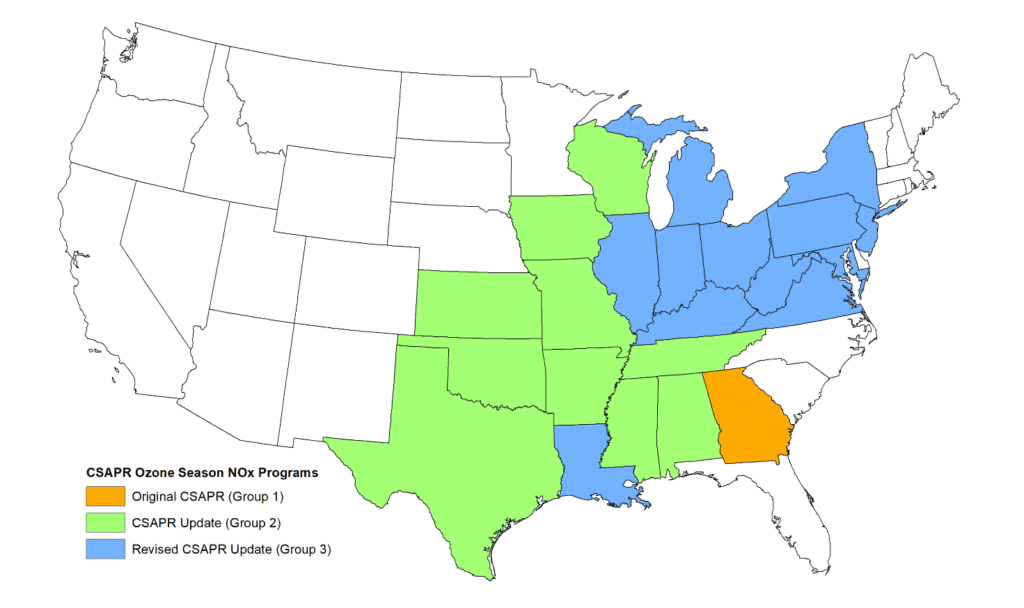EPA Finalizes Rule to Curb Cross-State Pollution
The U.S. Environmental Protection Agency (EPA) has issued an update and finalized a pollution rule that will require reductions in ozone emissions from power plants in 12 states this year.
The update to the Cross-State Air Pollution Rule (CSAPR), issued March 15, is designed to curb emissions of nitrogen oxide (NOx)—primarily from coal-fired power plants—ahead of a July deadline for states to comply with the 2008 ozone National Ambient Air Quality Standards (NAAQS) established during the Obama administration.
A federal judge last year ordered the EPA to act by March 15 to reduce cross-state pollution from seven states specified in a lawsuit brought by New Jersey, New York, and other states. Power plant emissions this summer will help determine whether states face additional regulatory requirements moving forward.
‘Good Neighbor’ Provision
Monday’s ruling follows several prior regulations, along with litigation, going back more than a decade regarding interstate pollution. The Clean Air Act, as part of its “Good Neighbor” provision, requires upwind states to address emissions because that pollution causes air quality problems in other states.
“Millions of people across the Eastern U.S. suffer because of the coal plant pollution that blows into their communities from neighboring states. The update to the Cross-State Air Pollution Rule is a common-sense step to help them,” said Graham McCahan, Environmental Defense Fund (EDF) senior attorney, in a statement Tuesday. “We can do much more, though. We urge EPA to build on this foundation and strengthen smog protections for all Americans who live near coal plants or in downwind states.”
The updated rule requires power plants in 12 states to reduce their NOx emissions by improving the operation of NOx pollution controls that are already in place, and by upgrading NOx pollution controls. NOx is a major component of ground-level ozone, better known as smog, and contributes to the inability of downwind states to meet an EPA health-based smog standard set in 2008.

The EPA has identified 22 downwind states in the CSAPR (some states are considered both upwind and downwind). The update issued Monday is in response to a court order requiring the agency to strengthen protections for those states, and will require that coal units in 12 states – Illinois, Indiana, Kentucky, Louisiana, Maryland, Michigan, New Jersey, New York, Ohio, Pennsylvania, Virginia, and West Virginia—use the upgraded and more-effective pollution controls already installed, and also update those controls. The agency has noted that coal-fired power plants with pollution controls may not operate them regularly, or may not use them to full capacity.
Monday’s update requires those plants to begin reducing pollution immediately after the rule is legally effective, which is 60 days after its publication in the Federal Register. It is ultimately expected to reduce NOx pollution from those plants by 19% over 2019 levels, according to the EPA. The agency said the rule is expected to provide an estimated $2.8 billion in health and environmental benefits.
The EPA noted that more than one-third of all coal plants in the Eastern U.S. have to date not installed modern pollution controls for NOx, and thus are not subject to the update. The EDF in a news release Tuesday said, “EPA will need to take further action to protect Americans from the more than 250,000 tons of NOx, and more than 300 million tons of climate pollution, those plants emitted in 2018.”
—Darrell Proctor is associate editor for POWER (@POWERmagazine).